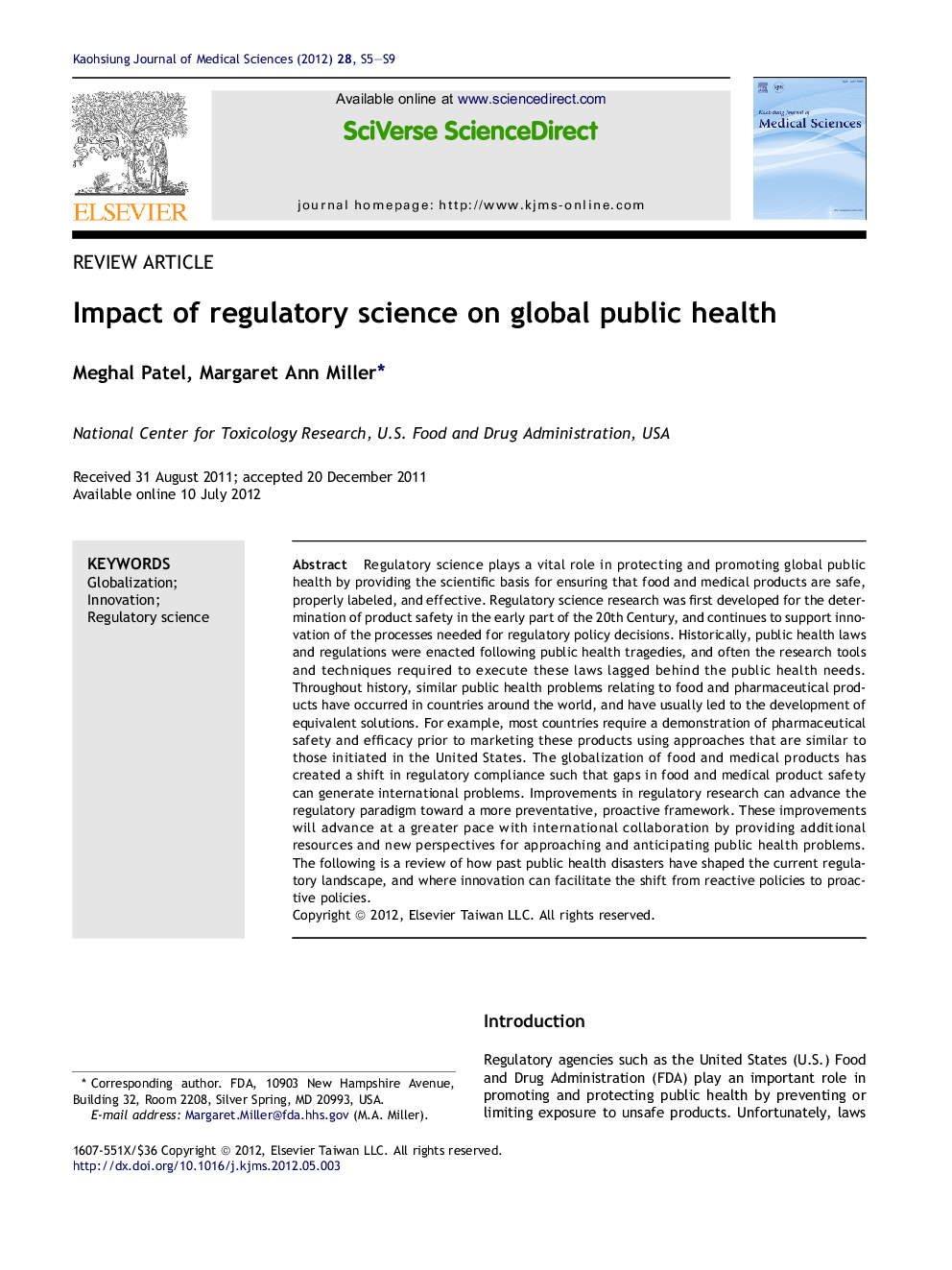| Article ID | Journal | Published Year | Pages | File Type |
|---|---|---|---|---|
| 3486016 | The Kaohsiung Journal of Medical Sciences | 2012 | 5 Pages |
Regulatory science plays a vital role in protecting and promoting global public health by providing the scientific basis for ensuring that food and medical products are safe, properly labeled, and effective. Regulatory science research was first developed for the determination of product safety in the early part of the 20th Century, and continues to support innovation of the processes needed for regulatory policy decisions. Historically, public health laws and regulations were enacted following public health tragedies, and often the research tools and techniques required to execute these laws lagged behind the public health needs. Throughout history, similar public health problems relating to food and pharmaceutical products have occurred in countries around the world, and have usually led to the development of equivalent solutions. For example, most countries require a demonstration of pharmaceutical safety and efficacy prior to marketing these products using approaches that are similar to those initiated in the United States. The globalization of food and medical products has created a shift in regulatory compliance such that gaps in food and medical product safety can generate international problems. Improvements in regulatory research can advance the regulatory paradigm toward a more preventative, proactive framework. These improvements will advance at a greater pace with international collaboration by providing additional resources and new perspectives for approaching and anticipating public health problems. The following is a review of how past public health disasters have shaped the current regulatory landscape, and where innovation can facilitate the shift from reactive policies to proactive policies.
